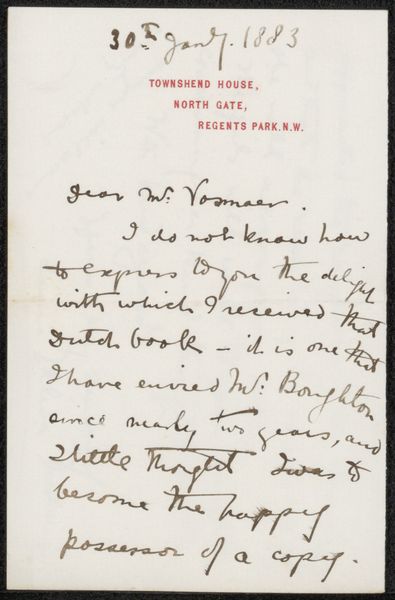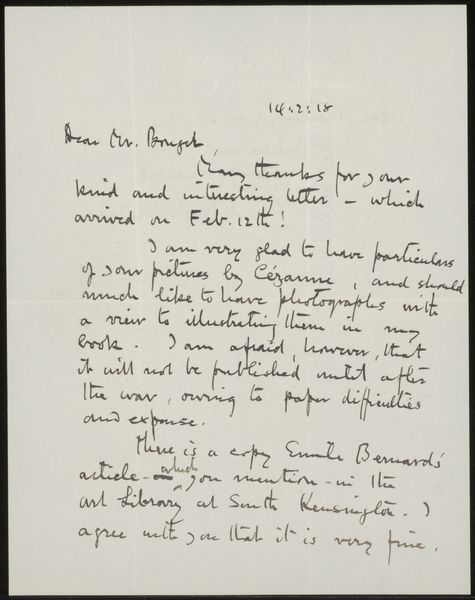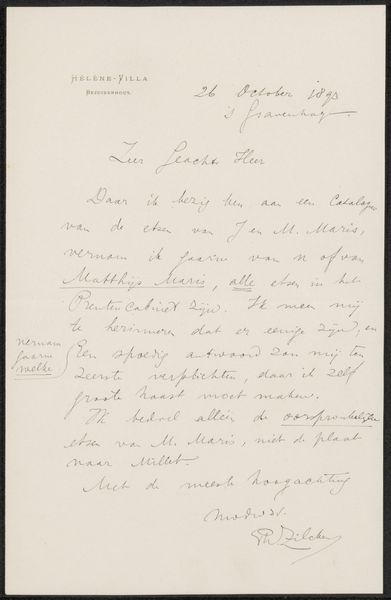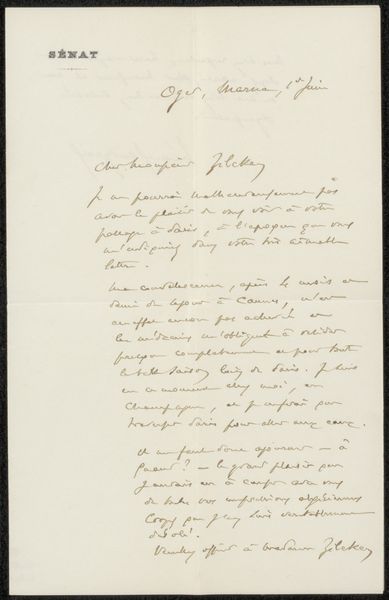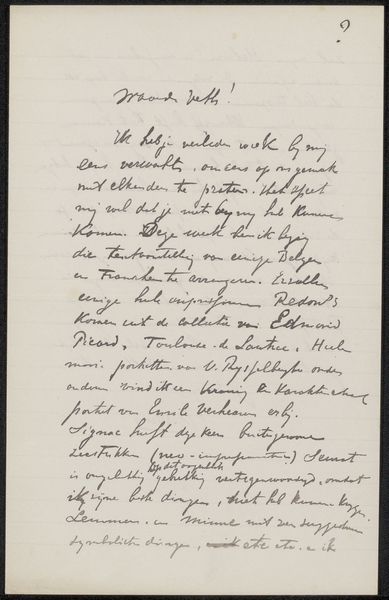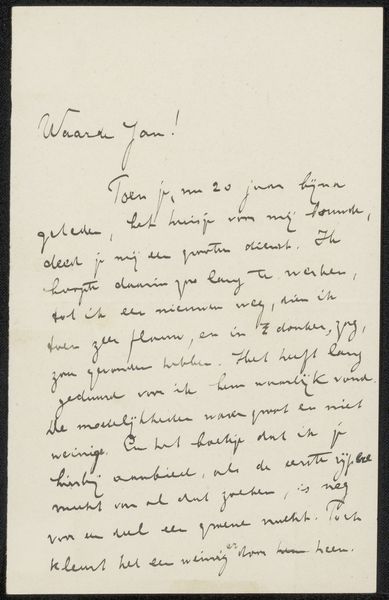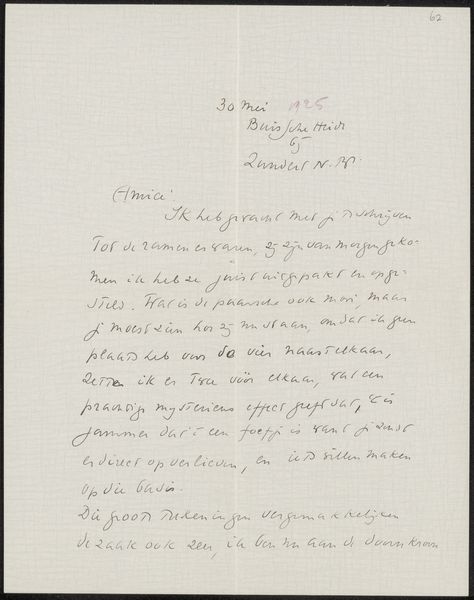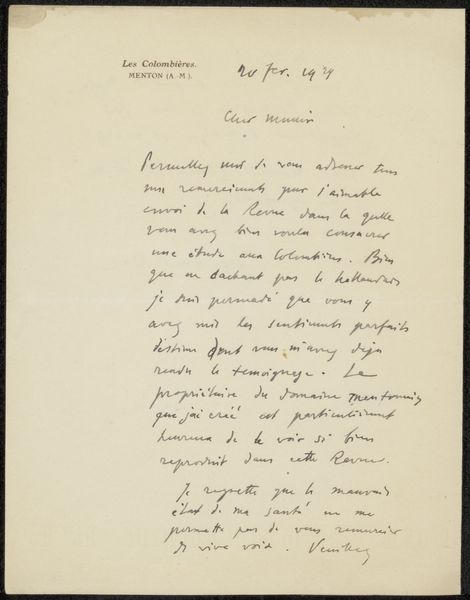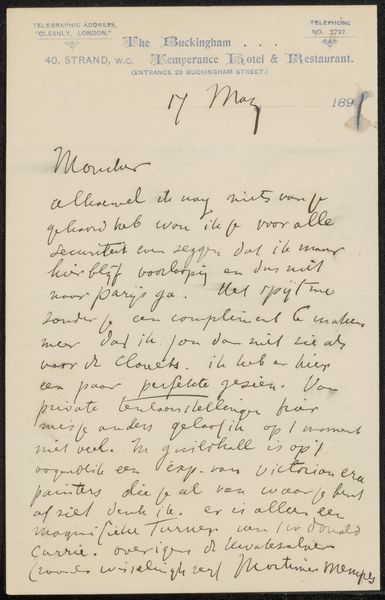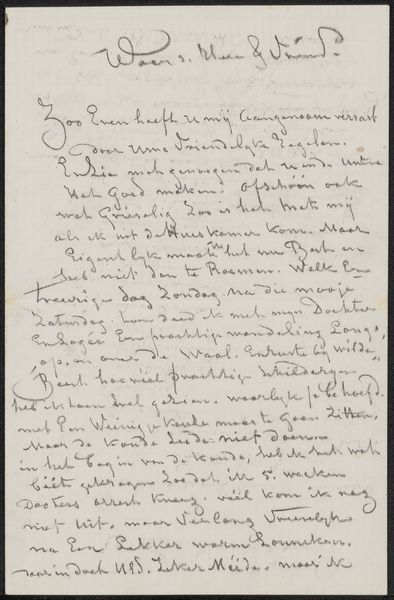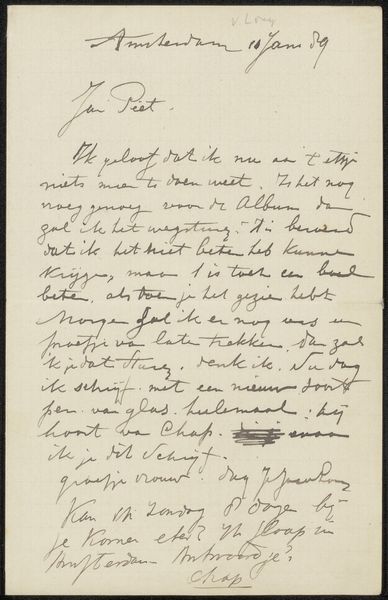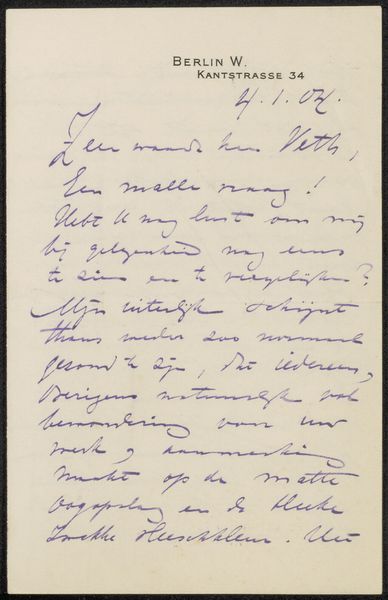
drawing, paper, ink
#
drawing
#
paper
#
personal sketchbook
#
ink
#
calligraphy
Copyright: Rijks Museum: Open Domain
Curator: Here we have Laura Theresa Alma-Tadema's "Brief aan Carel Vosmaer," dating possibly from 1881 to 1885. It's rendered in ink on paper. A personal note. Editor: Yes, it strikes me as so intimate, almost a whispered thought captured on paper. The cursive script seems to dance across the page. I imagine Alma-Tadema deeply engrossed as she is drafting her note. Curator: Precisely. What we see is not just a letter but a glimpse into the artist’s thought process. Notice how she acknowledges Carel Vosmaer's kindness for sending her an etching of "that little Dutch girl.” Editor: Which, from a contextual viewpoint, offers clues about the interconnected artistic communities of the time. We can consider the dynamics between artists exchanging works and the inspiration they drew from one another, including their particular fascination with Dutch heritage and a picturesque presentation of Dutch "girls". Curator: Structurally, observe the composition. The carefully placed address at the top, balanced by the signature below, creates a visual harmony. It's a small act of refinement, turning everyday correspondence into something aesthetically considered. Editor: Right, but reading between the lines reveals more. She mentions the costume in the etching being "so quaint," and then says she’ll use it in a picture! That signals an act of artistic appropriation, where culture is used like a stylistic prop in Alma-Tadema’s own constructions. It speaks volumes about representation, power, and cultural interpretation in Victorian art. Curator: And in considering semiotics, we note how the language—formal yet warm—adds layers to our understanding. It is both a thank you and a subtle assertion of her creative vision. Editor: Ultimately, it’s about considering this little drawing, this fragment of correspondence, not just as an isolated object, but as a node within a complex web of artistic influence, social dynamics, and the historical representation of gender and culture. Curator: A lovely note on which to end.
Comments
No comments
Be the first to comment and join the conversation on the ultimate creative platform.
